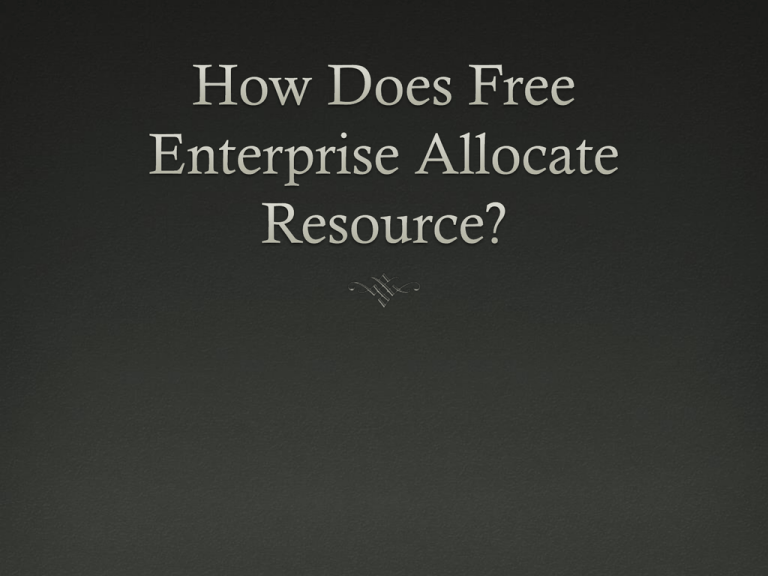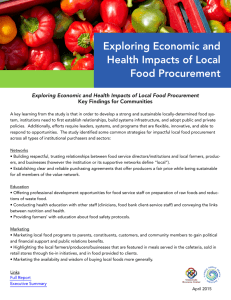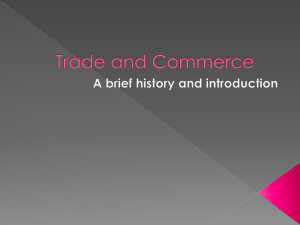How Does Free Enterprise Allocate Resource?
advertisement

Profit Profit is the money left over after the costs of producing a good or service have been subtracted from the revenue gained by selling that good or service. Producers Seek Profits Example: Coffee shop owners are motivated by the desire to earn profits. Coffee producers charge the highest price consumers are willing to pay. What is something worth? Motivated by profit, other producers enter the coffee business. The profit seeking of producers, then, has helped in the allocation of resources. Consumers Vote with Their Wallets When consumers choose to buy a product, the are “voting” for their choice against competing products. These “votes” help determine what will be produced in the future. Example: Low-carb foods. High-Carb Foods Product Unit Sales, 2003 (in millions) Percentage Change Over 2002 Instant Rice 79.1 -8.2 Bulk Rice 180.2 -4.9 Cookies 1,839.7 -5.5 Regular Carbonated Soda 7,032.5 -5.9 Dry Pasta 1,227.0 -4.6 White Bread 1,606.1 -4.7 Low-Carb/High-Protein Foods Product Unit Sales, 2003 (in millions) Percentage Change Over 2002 Frozen Meat/Seafood 483.5 +7.7 Meat Snacks 105.4 +7.6 Nuts 679.3 +8.8 Diet Carbonated Drinks 2,828.6 +1.0 Cheese 3,424.0 +4.0 873.1 +4.0 Wheat Bread Modified Free Enterprise Economy A mixed economy that includes some government protections, provisions, and regulations to adjust the free enterprise system. The United States, though bases on the market system, is mixed. Government is an important element in the American economic system, but its role is relatively limited. Government in the Circular Flow Model











